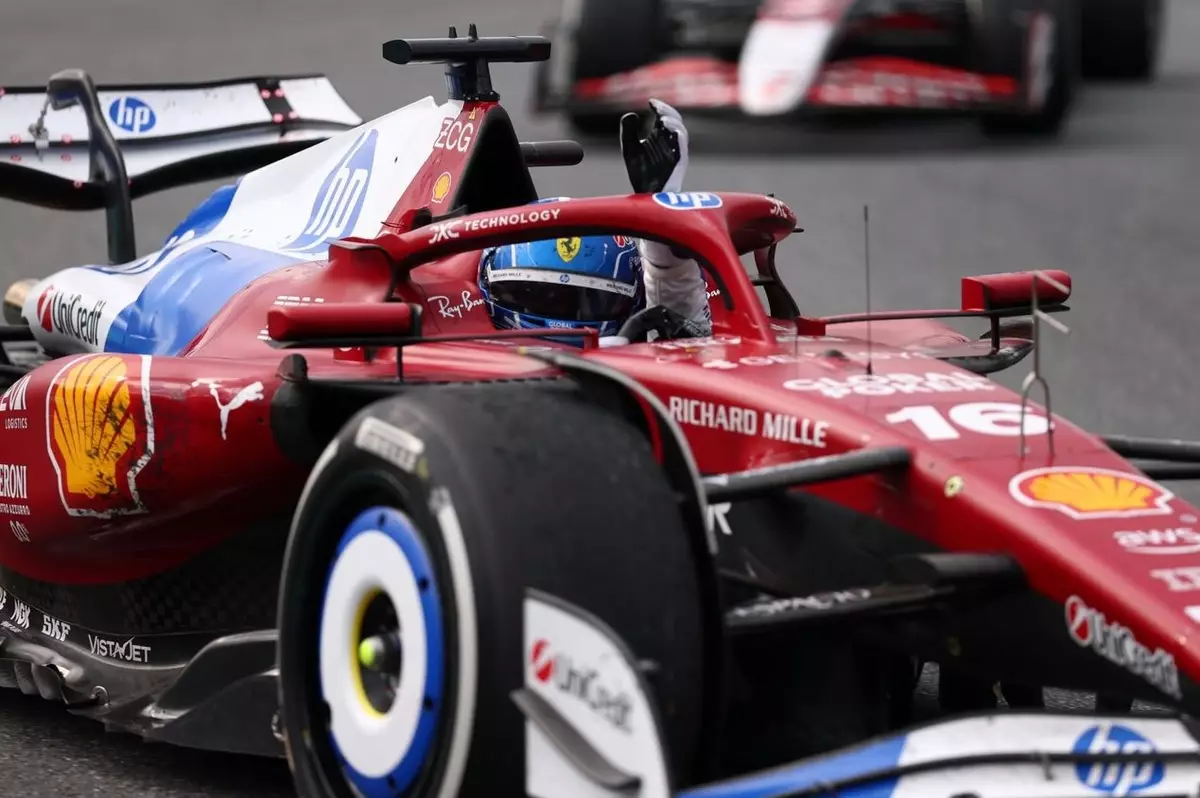The recent Miami Grand Prix showcased not just the competitive spirit of two elite drivers, Charles Leclerc and Lewis Hamilton, but also the complexities inherent in team dynamics within Formula 1. Their on-track battle raised important questions about strategy, communication, and the psychological pressures faced by drivers in the heat of racing. One of the most striking aspects of this race was how two drivers, both vying for individual glory while representing a team, found themselves entangled in a web of team strategy gone awry.
During the race, Hamilton found himself vocally frustrated on team radio, advocating for a chance to overtake Leclerc, who was on a different tyre compound. This situation illuminated a tactical dilemma that teams frequently encounter: should team orders prioritize collective goals or individual strategy? Hamilton’s hope to gain an advantage with fresh medium tyres clashed with Leclerc’s efforts to maintain his position on hard tyres. The tension mirrored a situation often seen in high-stakes sports where teamwork must balance with individual ambition.
Leclerc’s Perspective: Understanding and Accountability
Despite the heated exchanges and the bottleneck created by their positional swap, Leclerc maintained a diplomatic stance towards Hamilton. He expressed that any animosity between teammates was unfounded and that the lack of communication within the team was to blame for the confusion. “We need to do better, that’s for sure,” he remarked, noting that better strategy discussions could have led to a smoother resolution. This sentiment is important, as it reflects a mature understanding of racing that emphasizes the collective growth of the team rather than a binary focus on personal performance.
Leclerc demonstrated resilience and humility by admitting that the situation was frustrating for him as well. Struggling for position while contending with his team-mate’s pace added a layer of complexity to an already intense race. His ability to maintain a positive relationship with Hamilton in the face of strategy missteps reveals the character of a driver who prioritizes team cohesion over personal grievances.
A Call for Strategic Improvements
However, the crux of the issue lies in Ferrari’s ability to perform under pressure. Leclerc emphasized the need for Ferrari to enhance its decision-making process, particularly in races where team orders could make or break their chances. His comments about having to take better care of tyres while battling for competitive placement underscored a fascinating reality in Formula 1: the decisions made in split seconds can have long-lasting repercussions on race outcomes.
The critical takeaway from Leclerc’s reflections is the necessity of adjusting strategies on the fly. A more proactive communication approach could help mitigate misunderstandings and foster a more cohesive team environment. The incident in Miami serves as a learning opportunity not just for Ferrari but for all teams navigating the intricate balance of collaboration and competition.
The Psychological Toll of Competition
In the midst of this strategy chaos, the psychological impact on drivers cannot be overstated. Leclerc’s reality of driving behind Hamilton and struggling with dirty air highlighted the often-overlooked mental strains drivers face during races. Frustration at not making progress while also worrying about tyre management speaks to a driver’s psyche under stress.
Moreover, radio communications in Formula 1, often tasked with external insight, can reveal a truth different from what unfolds on the track. The urgency behind Leclerc’s radio messages about his tyres not only illustrated his immediate concerns but also acted as a window into the emotional landscape of competitive racing where every second counts. This dynamic adds a layer of complexity to understanding Formula 1, where information is both communicated and interpreted in real-time under intense pressure.
The exchange between Leclerc and Hamilton in Miami serves as a microcosm of Formula 1’s broader strategic and psychological frameworks, underscoring that in motorsport, every decision on the track is laden with consequences, steeped in urgency, and driven by teamwork.

